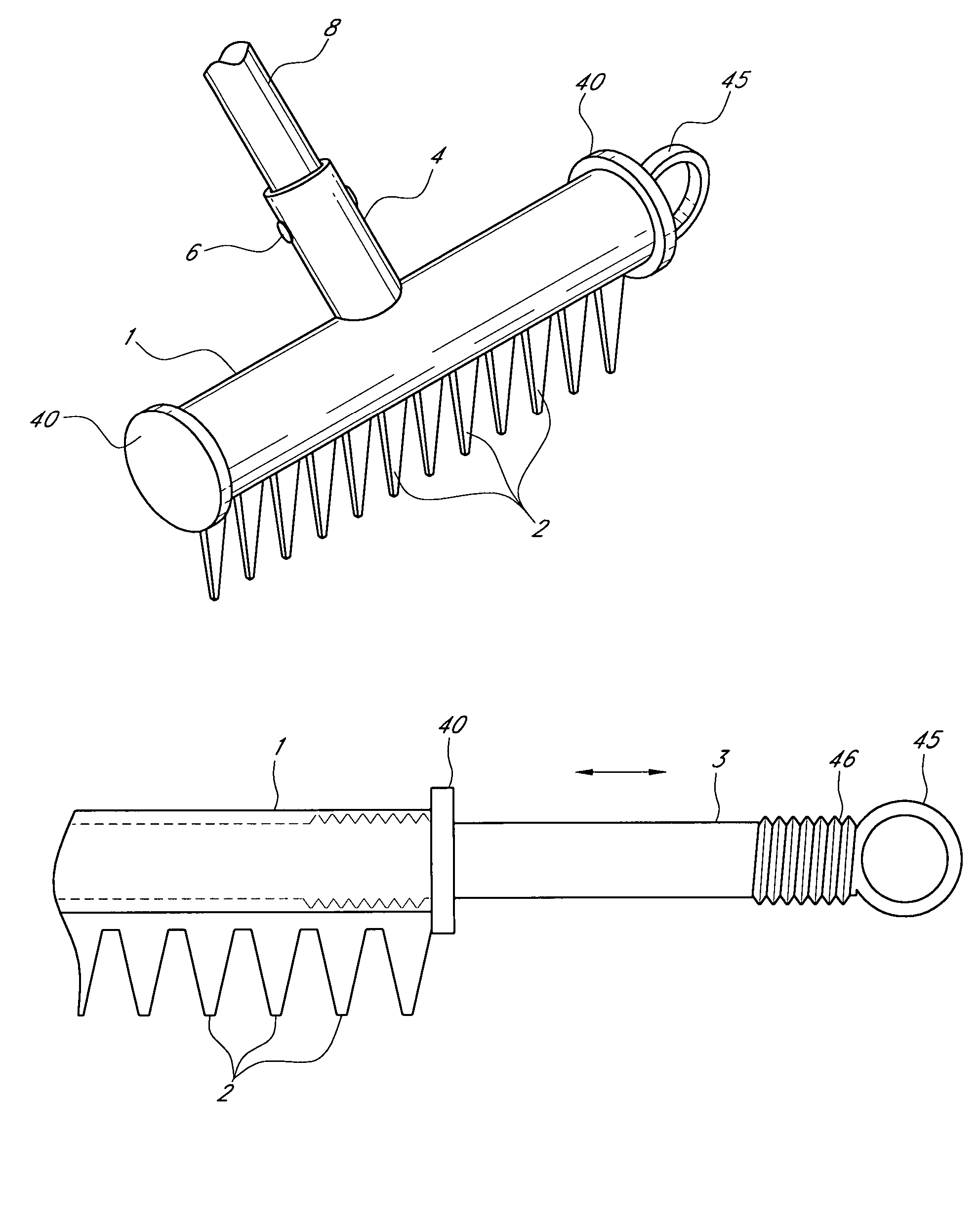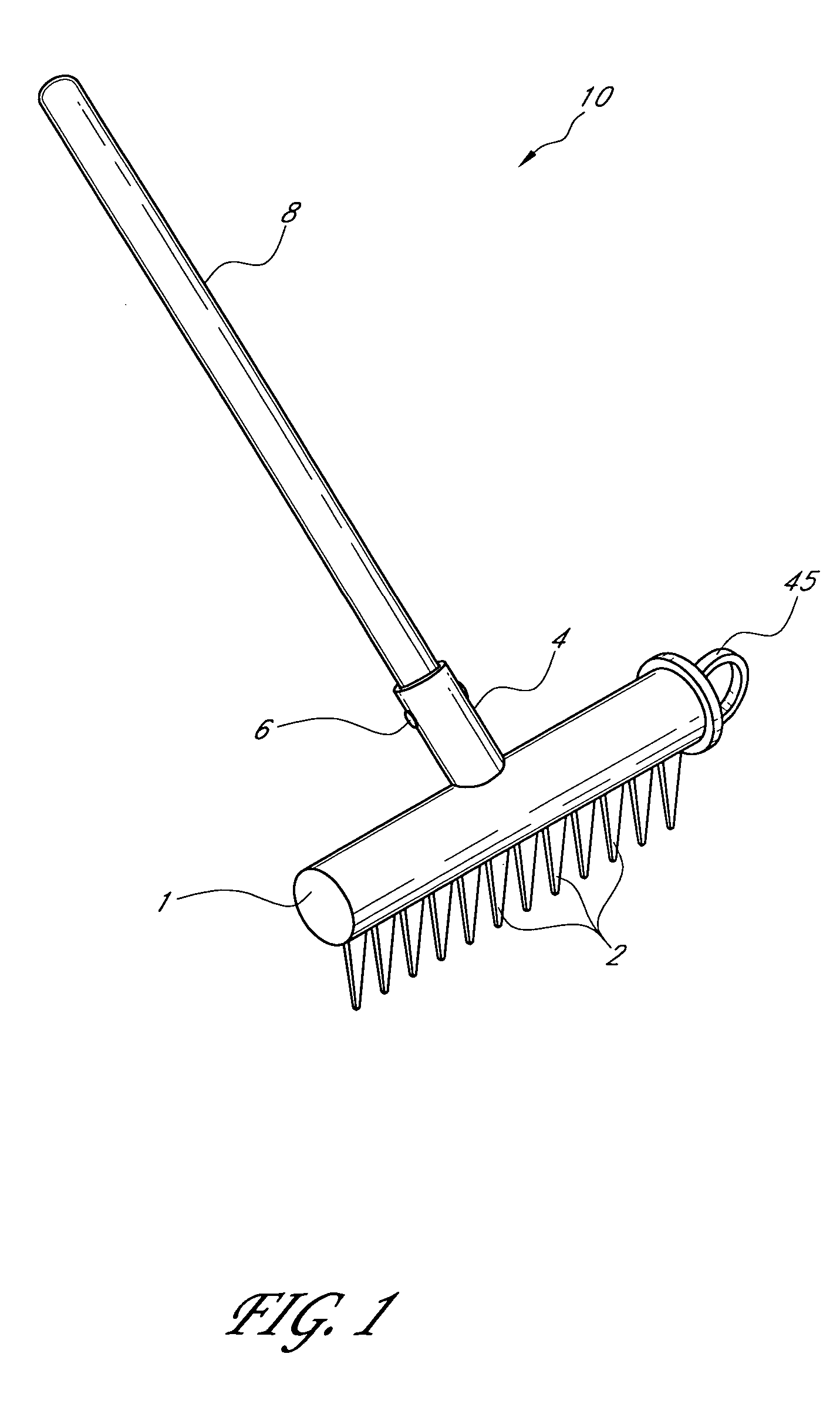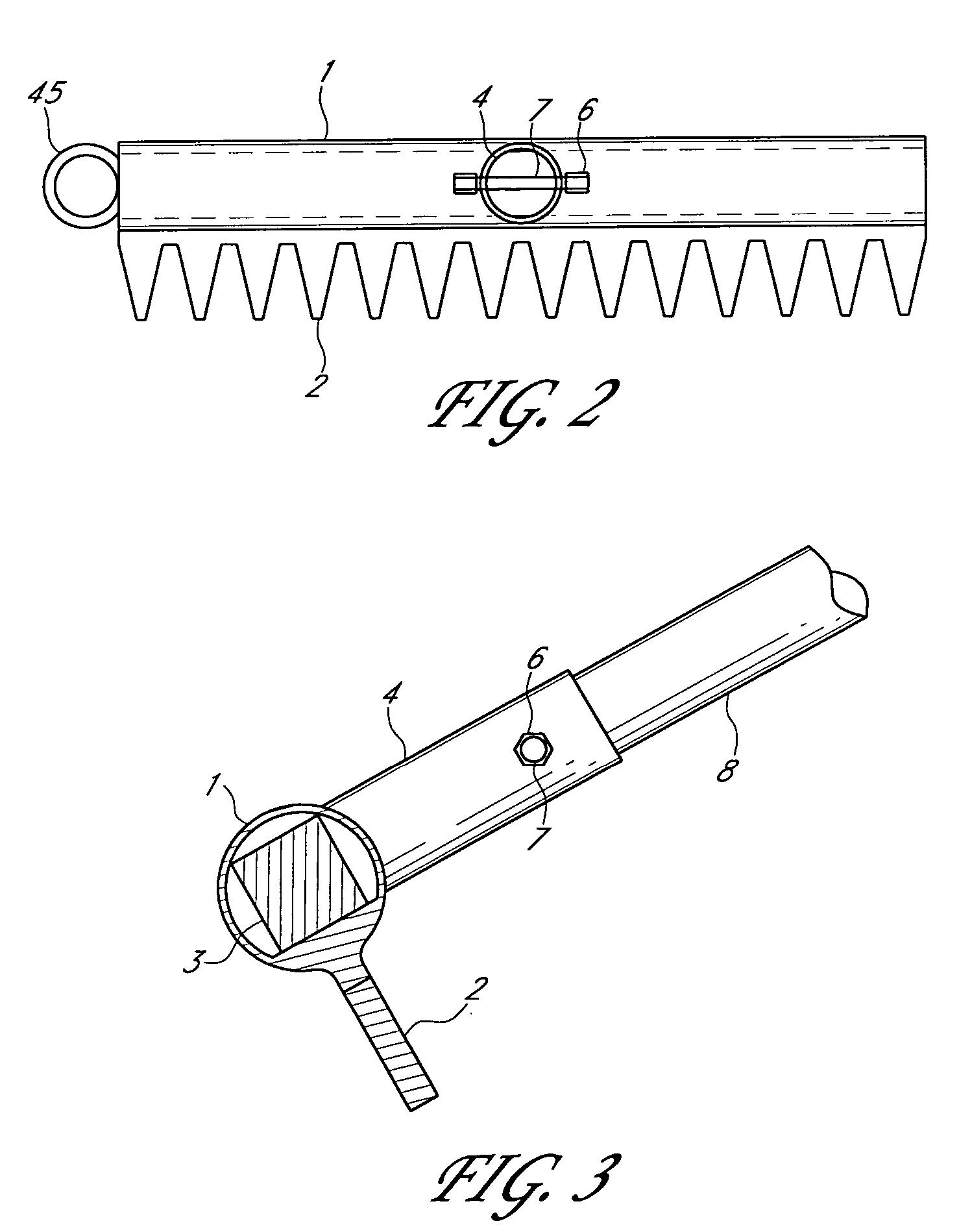Magnetic rake with release mechanism
a technology of magnetic rake and release mechanism, which is applied in the direction of manufacturing tools, transportation and packaging, and wellbore/well accessories, etc., can solve the problems of screw and nail, dangerous to vehicles and people on the jobsite, and difficult to clean up small ferro-metallic items at a construction site, playground, or similar location in a cost-effective and time-saving manner. , to achieve the effect of removing the magnetic attraction of the rake body
- Summary
- Abstract
- Description
- Claims
- Application Information
AI Technical Summary
Benefits of technology
Problems solved by technology
Method used
Image
Examples
Embodiment Construction
[0024]Embodiments of a hand-operated magnetic raking device with a release mechanism are described, comprising a handle attached to a toothed rake body that houses one or more magnets, and a release mechanism for the one or more magnets. The device may be used to agitate various types of ground cover medium, such as grass, gravel, dirt, and the like, much in the manner of a conventional rake, and to simultaneously pick up ferro-metallic particles that are attracted by magnetic force to the rake body. Thus, the magnetic rake provides two functions at the same time: raking and magnetic pick-up. Embodiments of the release mechanism eliminate the magnetic attraction of the ferro-metallic debris to the rake body and include embodiments that physically remove at least one magnet from the rake body. In other embodiments of the magnetic rake, the one or more magnets are electromagnets, and the release mechanism allows electrical current to the electromagnets to be turned on and off, using e...
PUM
 Login to View More
Login to View More Abstract
Description
Claims
Application Information
 Login to View More
Login to View More - R&D
- Intellectual Property
- Life Sciences
- Materials
- Tech Scout
- Unparalleled Data Quality
- Higher Quality Content
- 60% Fewer Hallucinations
Browse by: Latest US Patents, China's latest patents, Technical Efficacy Thesaurus, Application Domain, Technology Topic, Popular Technical Reports.
© 2025 PatSnap. All rights reserved.Legal|Privacy policy|Modern Slavery Act Transparency Statement|Sitemap|About US| Contact US: help@patsnap.com



